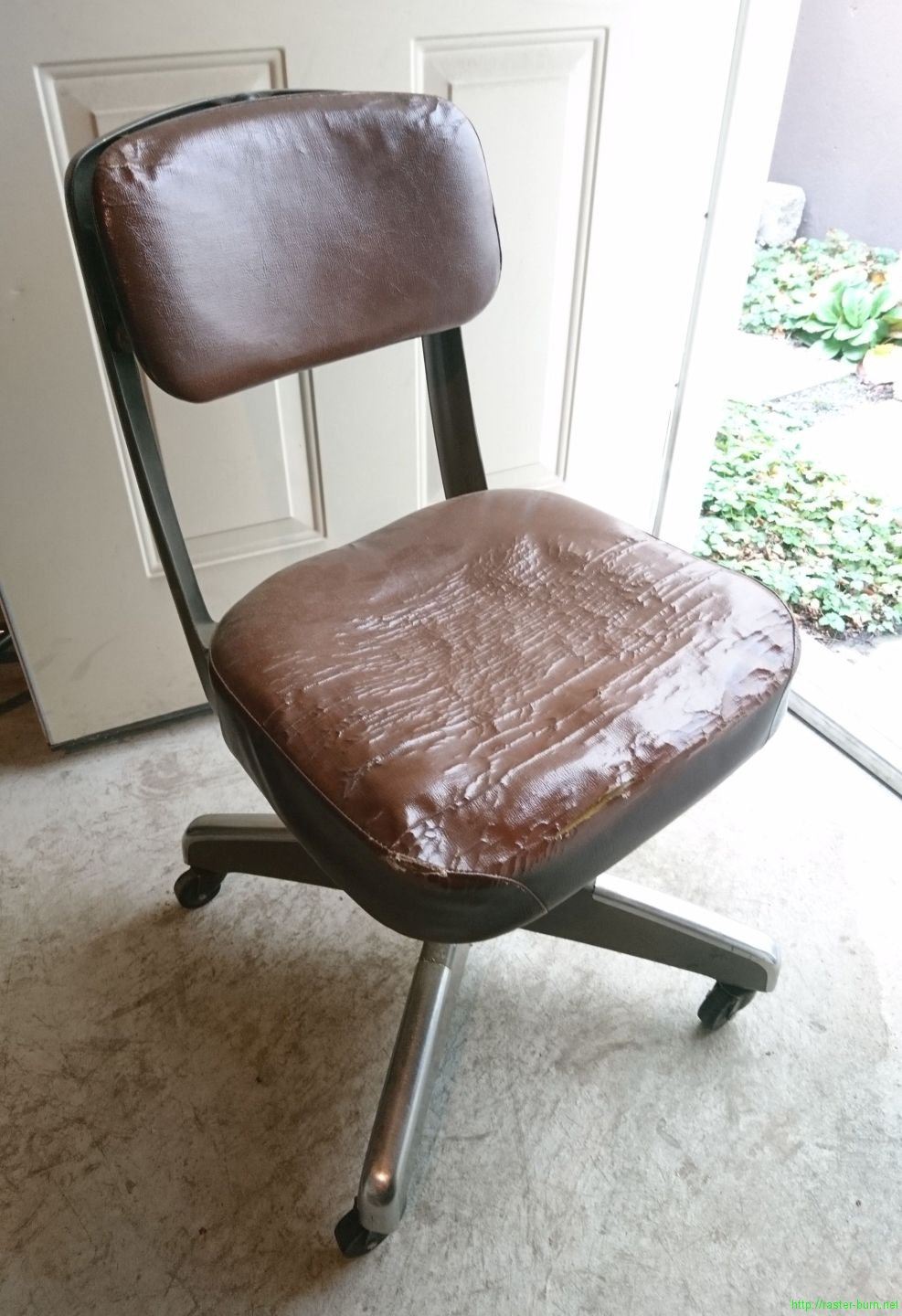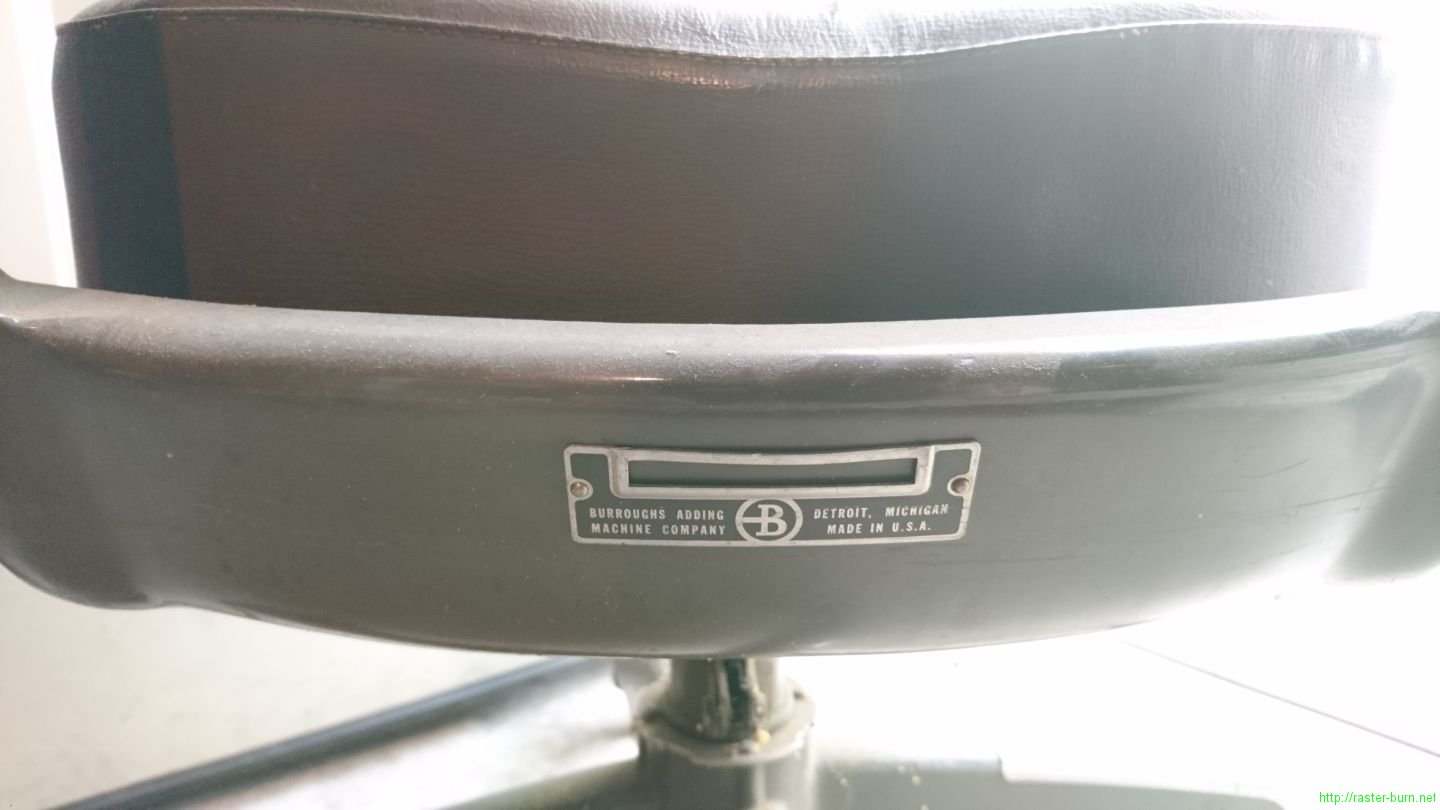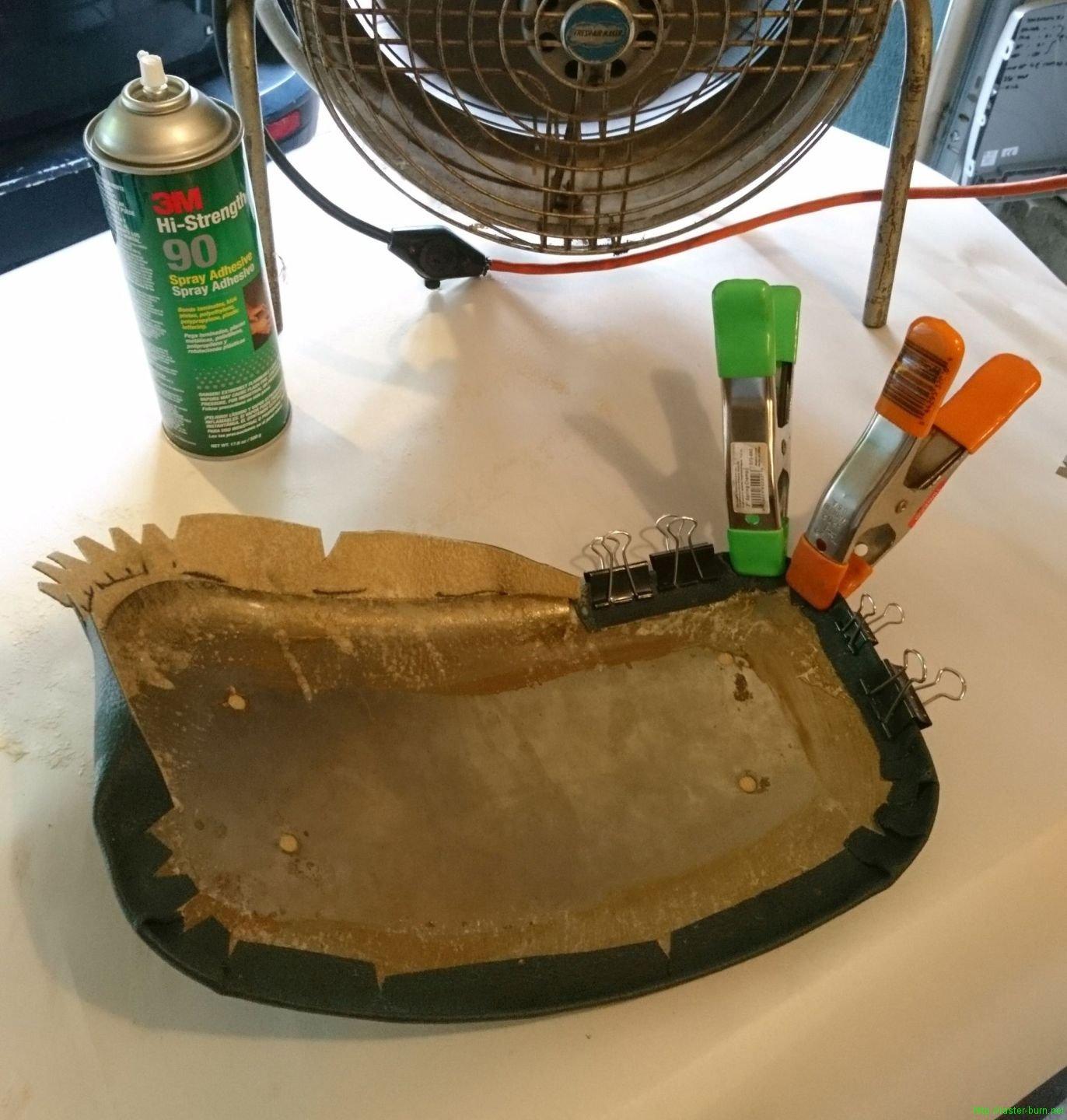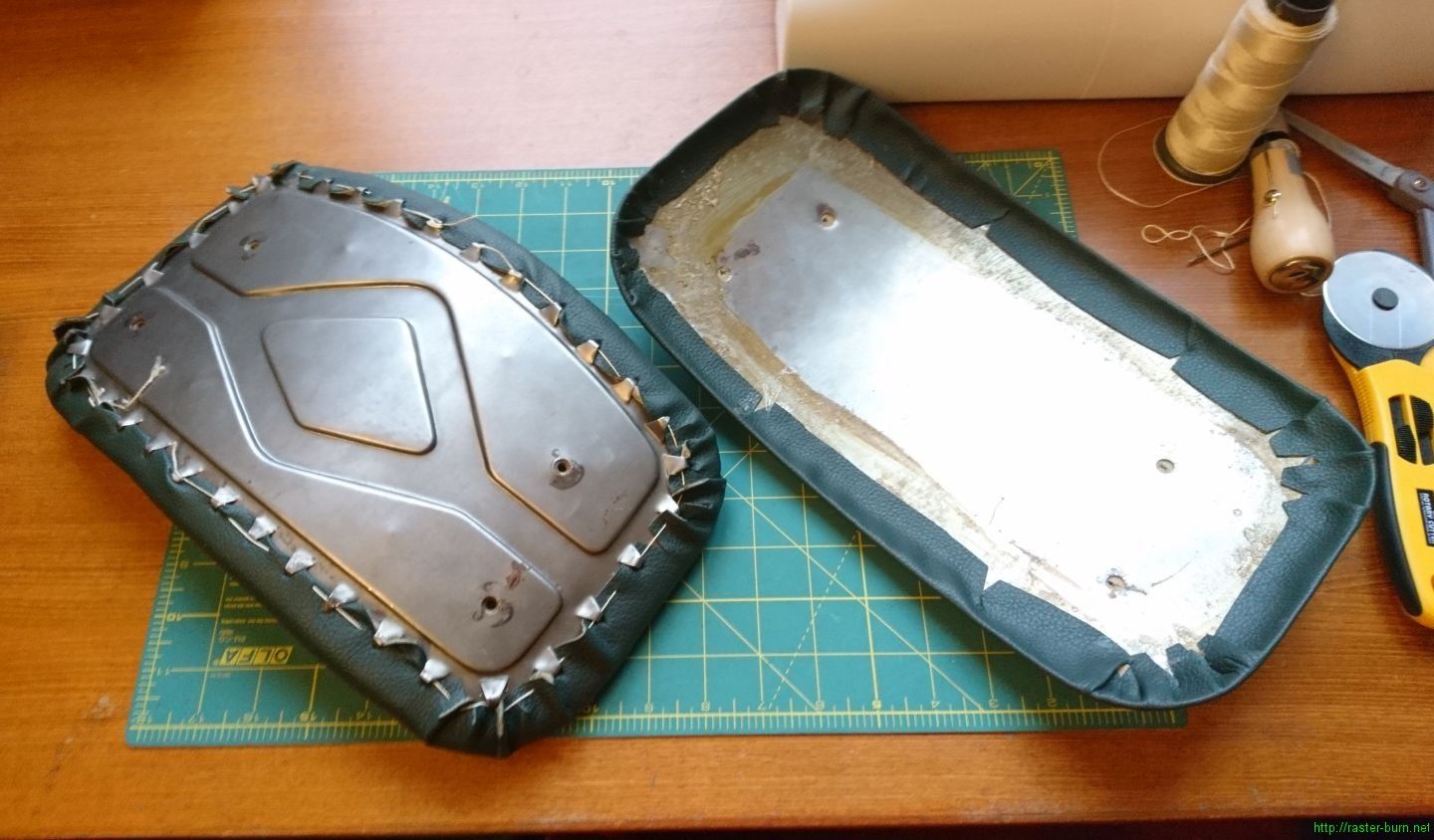The Burroughs Adding Machine Company ‘21466’ swivel chair
This neat piece was an overlooked leftover from the liquidation of a machine shop down the street from me. I’d picked up a few items at their auction, and a few more scrounging through the scraps at the end and asking the right questions, and I noticed this chair off to the side toward the end of load out. (Some other finds include a Friden Flexowriter and matched paper tape reader from an early numeric-control machining setup, and a CP/M capable TRS-80 Model III, but those will have to wait for another post…)


Looking past the shot vinyl, it was obviously a gem. The seat and backrest uprights are cast aluminum parts which would be an absurd extravagance now. The rest of the thing is hefty stamped steel, high quality fasteners, and more points of articulation and adjustment than you’d believe. When I asked about it, the guy running the sale took a dubious look at it, and told me I could just take it. I loaded it into the van, took it home, stashed it in the shop, and forgot about it until now.
I’d gotten the bug to break out the sewing machine, and was chewing through a few long latent projects with it. I ended up blocked on one of those, and while waiting to get the stuff I needed to continue remembered I had this sweet Burroughs chair just waiting to be recovered. So I dug it out and started tearing things down.
Every bit of vinyl, and most of the stitching and rubber padding, was dry rotted all to hell. Was able to get the old covers apart very easily, on most of the chair the top stitching was long gone, sometimes just tugging on the seam was enough to break it.
The backrest is a kinda cool two piece design that allows it to be upholstered without any machine stitching. The foam in it also yielded a clue as to the age of the chair. The U.S. Koylon Foam logo on it matches up to advertising for the brand from the late 1940s, while from 1950 or so onward the cursive look was dropped.
This was kinda what I was guessing anyway. The heavy use of cast aluminum, simple and robust adjustment mechanisms and construction, green paint on some of the fasteners, and general styling cues all had me thinking immediate post-WW2 era. The post-war era saw a lot of factory machinery and expertise from the war effort suddenly shifted to cranking out consumer goods. Many of those products, especially in the commercial market, retained a bit of a martial quality under the surface as wartime tooling stayed in service and back stock was used up.


I was able to pattern off of the original covers pretty effectively. No major surprises really, everything was pretty obvious as to how to recreate with fresh materials. I wish I’d erred a bit further on the small side with some of the pieces, as I ended up with some ripples I think I could have avoided. I also think the top stitching could have been more consistent with a bit more care taken with the trimming of the leave on the inside of the cover. All that said, pretty happy with the results, considering how few of these types of jobs I have under my belt.
The finished product. Pretty fun project that only took a couple evenings, and I have a nice comfy shop chair now instead of a lumpy grody one that sheds yellow dust that sticks to everything!
Some more reference pictures of identifying marks follow:
Seat base cast markings
“Burroughs Adding Machine Company 21466 Made In USA”
Backrest upright cast markings
“Burroughs Adding Machine Company 21466 Made In USA”
Label sewn in to seat cover edge
“Identification 5180 1-21466 Seats Burroughs”
Label glued to seat base
“Manufactured By Burroughs Adding Machine Company Detroit 32 Michigan”

